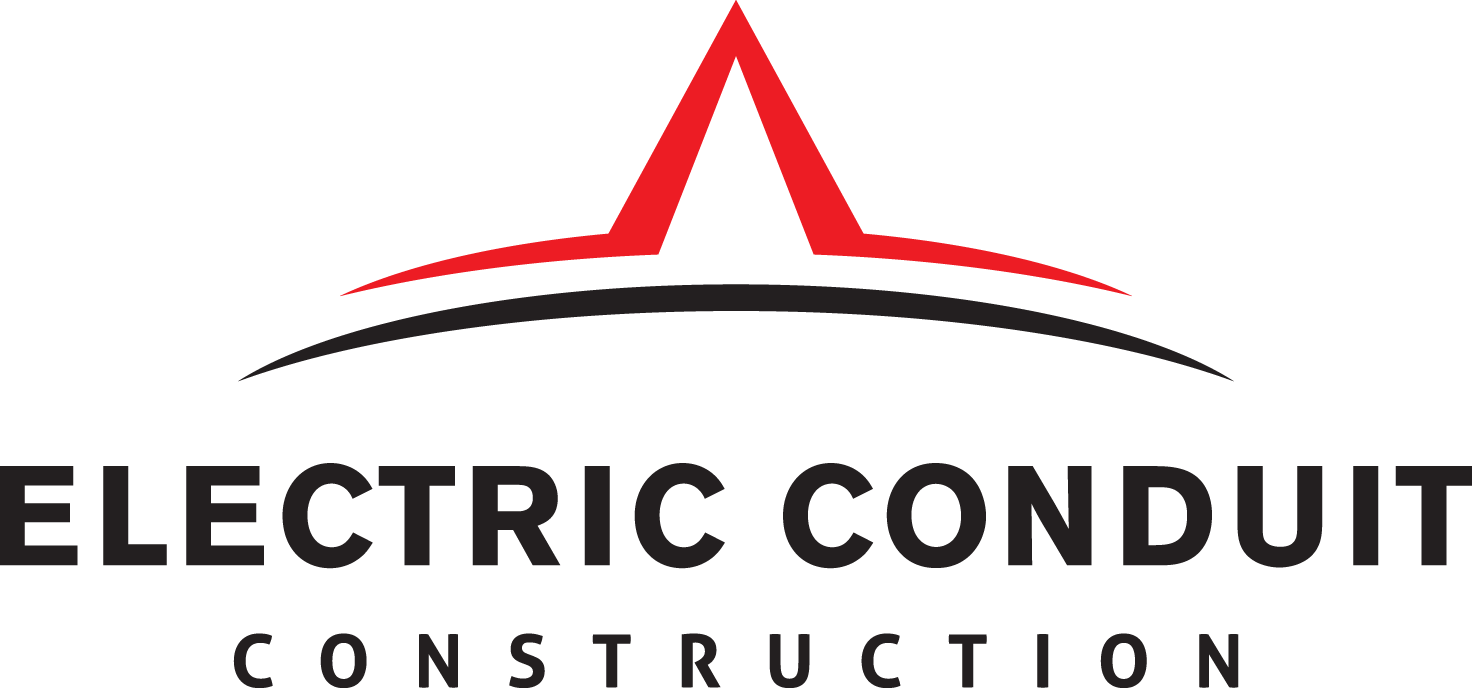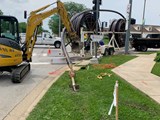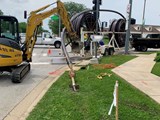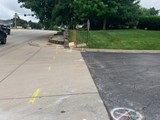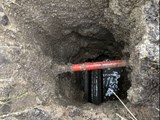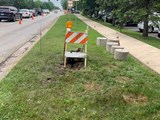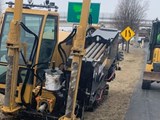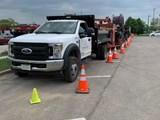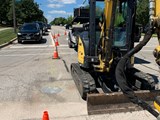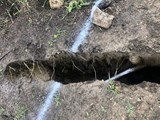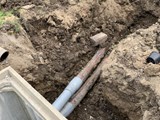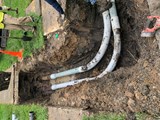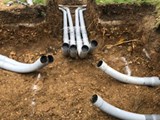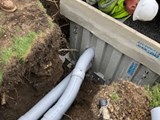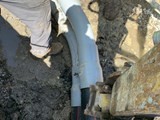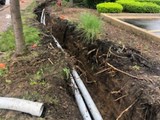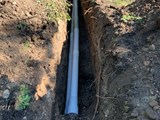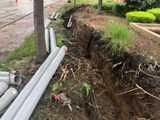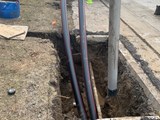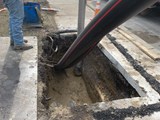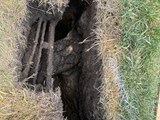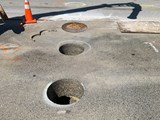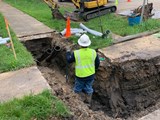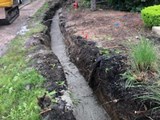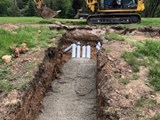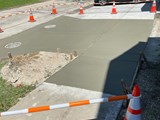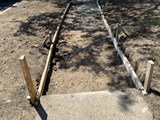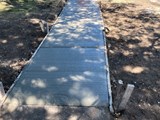Extending distribution power lines will become common as electrification for EV's evolves
Managing a 12 kv Distribution Line Installation
Construction projects usually consist of a defined scope of work and predefined steps that must be followed to bring the project to completion. This 2.5 mile 12 kv underground distribution line, consisting of two 6-inch conduits and cable, was no different in concept. However, the execution of this project turned out to be anything but typical.
The 12 kv underground distribution line of lay was along historic US Rt 20 which happens to be the longest road in the United States stretching from Kenmore Square in Boston, Massachusetts to Newport, Oregon 3,365 miles. The fact that the project line of lay was on this route may have been prophetic. Because the need for more underground distribution lines is just now beginning to be felt and this project took a long time to complete. As demand increases for EV charging stations, many of which will be in existing gas stations, the need for distribution power lines can only grow. To meet demand the installation must be done efficiently.
In this project, multiple municipalities participated in the permit process along with State DOT and County Jurisdictions. This proved to be quite challenging. The underground distribution line consists of 12 kv power cables inside two 6-inch conduits. Two of these conduits were called for in the scope. The installation was to be by horizontal directional drill with open cut used to extend the conduit to splice boxes or risers. The line of lay cut through all these jurisdictions and had to snake its way over, under and around existing utilities including deep, buried water, and sewer mains, gas distribution mains and service taps, electrical lines, fiber optic and cable telco lines. Some municipalities were uncertain of the exact location of their sewer and water lines.
Drawings: The IFC (Issued for Construction) drawings detailed all aspects of the project including, right-of-way (ROW) limits, underground utilities, running line, curb lines, splice box and riser locations, existing curb cuts. But in construction there are always variables, and, on this project, they created challenges.
Splice boxes: were set every 450 ft. This was done to accommodate future taps and risers. Despite good planning and design work, a few of the splice box locations could not be built to the design because their location conflicted with driveways or other above ground utilities. Which meant that the splice box had to be moved in turn resulting in other boxes being moved to stay within the 450-foot length limits. All these impacted permits and caused more design changes.
Utility locates: This project’s ROW is a very congested underground utility corridor. The sewer and water infrastructure owned by cities is decades old and records can be spotty or non-existent. Such was the case along part of this project. Water mains were marked on the prints. However Electric Conduit Construction (ECC) will not dig or bore unless positive identification of the utility is made by potholing, and sufficient clearance exists between the utility and the bore head. In the case of these water mains ECC eventually located them 20 ft. away from the location indicated on the prints. This also triggered design and permit changes and caused delays.
Actual Construction Impact: City engineering staff and their colleagues at the county and state level must review and approve drawings for proposed infrastructure installations such as these. Their reviews and approvals lead to the issuance of permits to perform the work. There were occasions where the reviewer understood the final drawing but did not understand the footprint of the construction equipment and activities, required to install it. An example in this project occurred where the line of lay crossed a major arterial road. The running line for the two 6-inch ducts made a 90° turn, then a 16’ deep drill carried it across the road, up to the exit pit where the conduits made another 90° turn and was drilled parallel to the arterial for the remainder of the 450 ft. distance to the next splice box. The amount of space required to set a drill rig on one side and a reel on the other side exceeded the amount of ROW width available. The city did not want the road cut, and the right of way was too narrow to accommodate the footprint of the equipment. This situation precipitated more meetings, design changes and delays to accomplish the crossing.
Project Manager: The role of the project manager should not be underestimated on projects like this. ECC’s PM was closest to the actual work being performed. It fell to her to coordinate with the utility operator, field crews, and all impacted parties. This resulted in conference calls with up to thirty people participating, and field meetings to unravel problems and find solutions. Everyone involved in this project worked to find solutions. The underground utility landscape is a complicated collection of pipes, cables, and conduits, and it is invisible. Until a pothole reveals the actual lateral location and depth of the utility no one can be one hundred percent sure of its location. Our project manager is to be commended for her professionalism, adherence to our rules to dig by, and safety protocols, and exceptional ability to work with all stake holders to get the project completed.
Notifications: Permits dictate where and when a crew can work and for what length of time. The permit department of the issuing agency is aware of this, but residents and business owners are usually not. An additional responsibility of our project manager is to collaborate with the crews and provide notification to residents of what is about to happen along the ROW in front of or across the street from their home or business. When a delay occurs and the crew is forced to shut down and leave the site unfinished, the site must be made safe, owners must be notified of what is happening and a new round of notifications sent out at the next location. The notification process alone sometimes involved the work of two project managers to keep up with it.
Crew Management: With each change, no matter how small, a domino falls and takes others with it. One design change can cause a crew to be relocated until that change is approved and the construction task can begin anew. Every crew relocation must be communicated to the stakeholders. This is a costly process for all involved. But for the contractor, who must keep the crews intact and the machinery on site, it is thousands of dollars per day costly.
Duration: It took over six months to complete this project.
Outlook for the future: This 2.5-mile project is an indicator of things to come. Massive amounts of power will be required for fleet power and individual vehicle charging. This means more power lines carrying distribution voltage. This voltage will be stepped down to three phase 480 v AC and then inverted to 400 v DC power. All of this requires more infrastructure. All parties to this process will have to look for ways to speed the construction process. Here are eight areas that should be explored:
- Utility owners must develop more accurate three-dimensional maps of their assets
- Operators seeking a clear running line must do more exploratory work before construction. This will mean more potholing to verify utilities, and more geotechnical work to assess soil conditions and suitability for the type of installation used.
- Jurisdictions will have to work harder to understand the actual impact of construction in addition to focusing on the final installed work. Construction impact is temporary but lack of understanding of its effect can cause delays, schedule changes, and irritation to motorists and residents who must live with it.
- Speed to market may become a consideration as the demand for power increases. For example, if a road cut is faster than a directional drill then that method should be considered.
- As the EV fleet grows from 7% in 2023 to 15 or 20% by 2030 the demand for these lines will increase proportionately. The entire process of planning, engineering, design, approval, and construction must accelerate.
- Leverage every stakeholder’s expertise. Contractors are usually brought in at the time of award. If the Issued for Bid drawings (IFB) lead to an award, then it may be possible to budget time for the contractor’s construction input on the actual IFB design. This would give time to adjust for the actual construction footprint as seen through the eyes of the contractor. This would help with project execution by eliminating surprises during the project.
- It is important to streamline who can make decisions on a particular project. It may be possible to form a core group that would make most decisions with the ability to reach out for various disciplines when a given problem required specialized skills and knowledge.
- Instantaneous communication helps keep the project moving. Today, cloud computing allows field personnel and project managers to see problems with clarity. With this information a core group of decision makers can make decisions quickly move the project forward.
ECC always looks for ways to save cost and improve efficiency. Small efforts add up and any way we can save time, labor and equipment means that our customers save money. With the demand for electrification on the upswing ECC will do everything possible to innovate and make our work more productive for less cost.
About Electric Conduit Construction: ECC is a 60-year-old underground and overhead construction company. Areas of expertise include telecommunications, overhead and underground electrical, fiber optic splicing, testing and termination, long haul OSP fiber, open-cut installation, horizontal directional drilling, civil – grading, concrete, curb and foundations, restoration for all surfaces.
ECC has an exemplary safety culture and safety management system, training program, QA/QC program and has spearheaded and funded training facilities to produce skilled workers from inner-city workforces.
We welcome your RFQ’s and RFI’s please click on “Request a project.”
